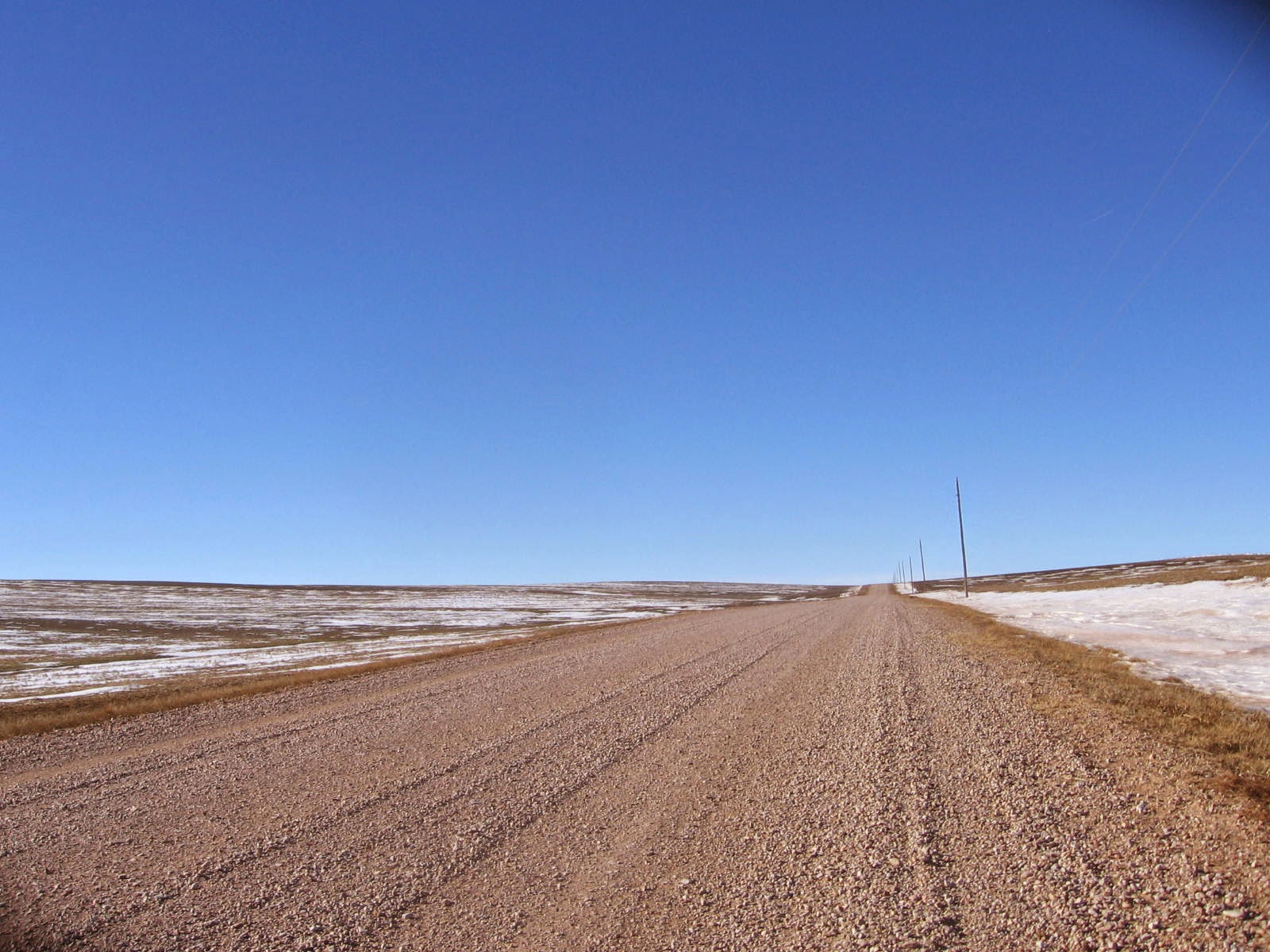For me, this is the best of the best. This is where I most love to ride. In about 33 miles, these remote roads wind up and down through granite spiked, conifer stuffed hills, roll down creek filled valleys, climb a final ridge line for a stunning vista and drop to the prairie below. All along is history, wildlife, folk culture and more. I had to include it the Black Hills BackBone.
I know there's nice stuff further west, from Jewell Cave to Pringle to Edgemont. But that's for others, or for another day. I'm going from Custer to Buffalo Gap.
 |
| Emerging from the Black Hills to set sail for the prairie. |
From Harbach Park in Custer, ride one block north on 6th Street and turn East (right) on U.S. Highway 16. One mile later, turn South (right) on Sidney Park Road (793) for four miles of generally uphill riding through suburban Custer. Turn East (left) on Flynn Creek Road (336) to return to forest gravel and the now familiar mostly up, sometimes down, spin through the hard rocks and thick trees of the central Black Hills. Enjoy this stretch, as this terrain and these roads are winding down.
 |
| Rolling through the last of the granite and pines. |
After about 9 miles, Flynn Creek Road (336) t-bones into Rankin Ridge Road (391). Before turning, stop. Look to the left. There, in a meadow, is the Cold Spring School, built in 1887 and restored in 1965. That's a 128 year old building that was restored 50 years ago. The school served as a church on Sundays, which explains the nearby cemetery. Well worth the short ride up for a closer look.
 |
| Old School. |
Back at the intersection of Flynn Creek Road (336) and Rankin Ridge Road (391), turn East (left) onto Rankin Ridge Road (391) for about a mile before it then t-bones into S.D. Highway 87. Along this short stretch, Rankin Ridge Road (391) enters Wind Cave National Park. Be attentive to large mammals, as the Park is home to herds of buffalo, elk, deer and pronghorn, as well as the secretive, solitary mountain lion.
 |
| Buffalo are all over Wind Cave. They don't miss much. |
Turn North (left) on S.D. Highway 87 for about a mile of pavement and then East (right) onto Highland Ridge Road (NPS 5), a gravel road that breaks out of the trees and into the emerging prairie. Almost immediately, the sound of barking prairie dogs fills the air as the road passes directly over a prairie dog town. The skittish critters are fun to watch, but keep an eye on the road, which sports unique pot holes.
 |
| Prairie dog pot holes on NPS 5. |
Highland Ridge Road (NPS 5) rolls along a ridge line with sweeping prairie vistas and steadily descends for much of its eleven miles until it t-bones into 7-11 Road. Check your speed, as I have found loose gravel at the bottom of downhill corners. Besides, you don't want to miss this landscape or this wildlife.
 |
| You think you're fast? Watch these guys and gals. 60+ mph. |
Turn East (left) on 7-11 Road to exit Wind Cave. For a taste of local folk art, on a good sized scale, look left about 2 miles later. There, in a pasture, is a metal cowboy on a horse lassoing a 10+ foot tall fire breathing dragon. If riding the BackBone, this sight appears over 260 miles from the start. Just a heads up that, at least this, is not a hallucination.
After about five miles on 7-11 Road, you enter the village of Buffalo Gap to return to prairie gravel for a final push to the border. There's plenty of fun riding ahead, but that was a great stretch right there.
Post Script: As I said, there are herds of buffalo, elk, pronghorn and deer at Wind Cave. The above pictures may give the appearance of a few individual animals. Here's a picture taken last August by riding buddy Shaun Arritola as we rode through a small herd of 50 or so buffalo, maybe more. Just saying.


























